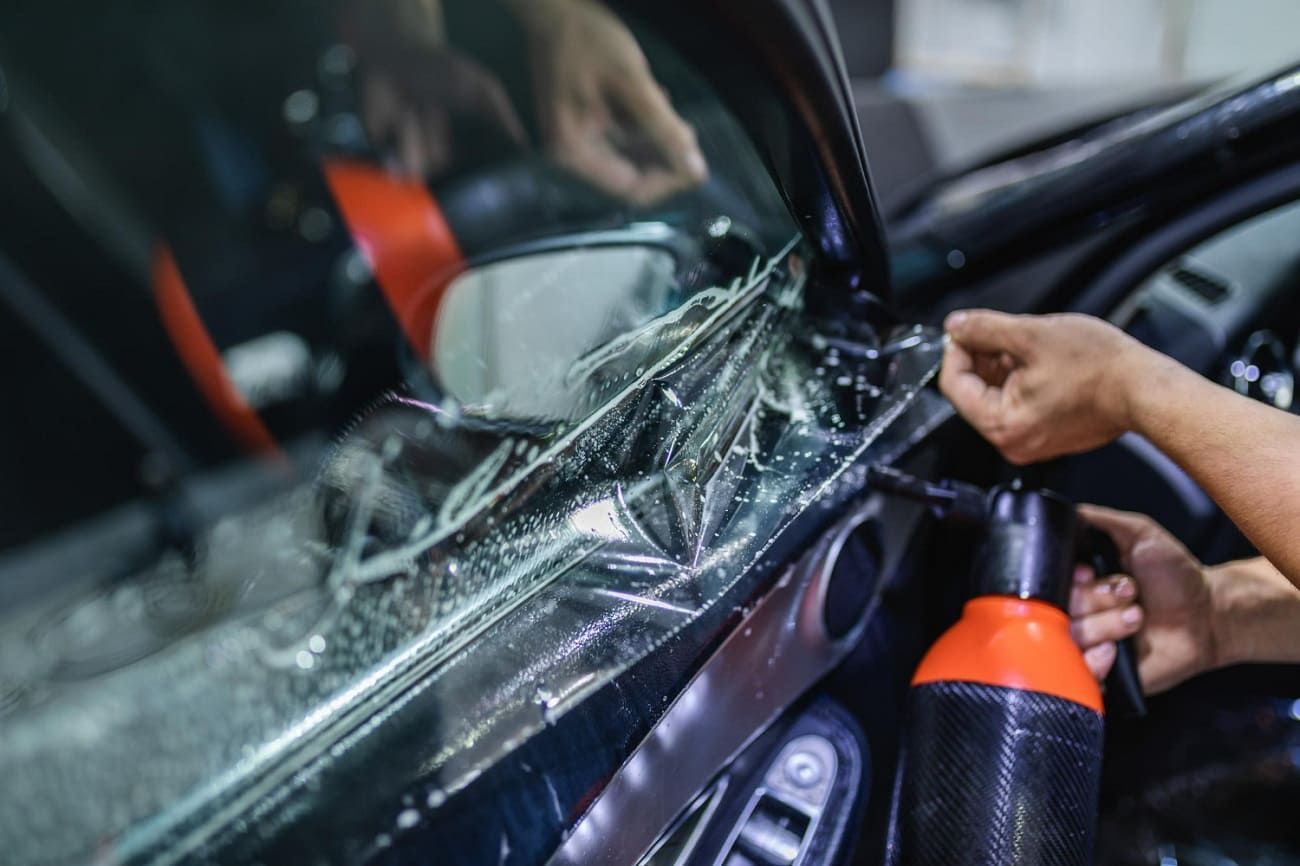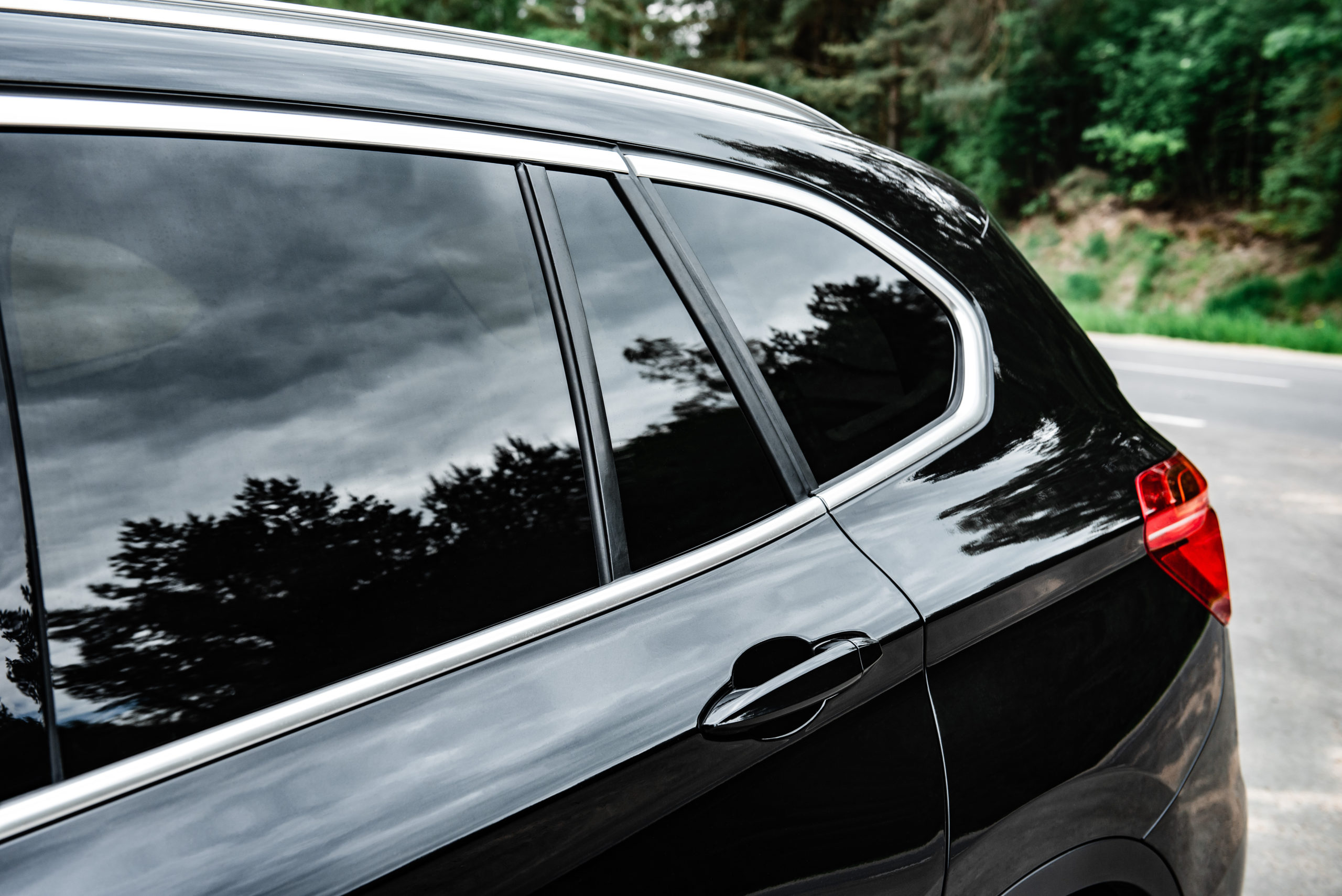Enhance Your Vehicle's Look with Professional window tinting Services
Enhance Your Vehicle's Look with Professional window tinting Services
Blog Article
Exploring the Different Sorts Of Window Tint for Cars and Their Advantages

Dyed Home Window Color
Colored home window tint is a popular choice among vehicle owners looking for to boost personal privacy and lower glow while preserving a trendy appearance. This type of color is developed by integrating dye into the adhesive layer, which is after that used to the home windows of the car. The primary appeal of colored home window tint depends on its capacity to give a cosmetically pleasing appearance without sacrificing capability.
Among the most significant advantages of colored window color is its capability to block hazardous UV rays, assisting to safeguard both passengers and the lorry's interior from sun damages. Furthermore, this tint efficiently reduces glow, adding to a much more comfortable driving experience, specifically during brilliant daytime conditions. The deepening of home window shade likewise adds a layer of personal privacy, making it a lot more difficult for outsiders to see inside the vehicle.
Nonetheless, it is necessary to note that while colored window tint offers many advantages, it may not give as much warmth being rejected as various other kinds of tints. In addition, its durability can be affected by exposure to long term sunshine, potentially leading to fading gradually. In general, colored window tint continues to be a favored choice for those focusing on appearances and basic sun defense.
Metalized Home Window Tint
Metalized home window tint represents an innovative alternative for cars and truck owners looking to enhance both efficiency and appearances. One of the key advantages of metalized window color is its premium warm rejection capacities, which can substantially decrease the interior temperature level of an automobile.
Furthermore, metalized colors use increased durability contrasted to dyed movies, making them resistant to fading and damaging. This durability ensures that the color maintains its performance and appearance with time, supplying long-term worth.
Additionally, metalized home window tint can improve privacy and safety by making it harder for outsiders to see inside the car. The reflective top quality of the tint can additionally discourage possible theft, as prized possessions are less noticeable (window tinting). While it may disrupt some digital signals, such as GPS or mobile phone reception, the general advantages make metalized window color an engaging option for several vehicle proprietors
Ceramic Window Tint
Supplying advanced modern technology and unrivaled efficiency, ceramic home window tint has arised as a top selection for critical car owners. This innovative movie is made up of advanced ceramic bits that give substantial heat being rejected while preserving quality and presence. Unlike traditional tints, ceramic window color does not count on steel or color, which can hinder electronic signals from gadgets such as general practitioner and cellular phone.
Among the standout benefits of ceramic home window tint is its extraordinary UV defense. It obstructs up to 99% of hazardous ultraviolet rays, consequently securing both the lorry's inside and its occupants from sun damages. Additionally, this kind of tint enhances privacy without jeopardizing exposure, making it a functional choice for day-to-day vehicle drivers and deluxe lorries alike.
Ceramic home window color likewise boasts sturdiness; it is resistant to fading and damaging, guaranteeing long-lasting performance. Moreover, its non-reflective nature suggests it does not create glow, adding to much safer driving problems. For those seeking a costs color service that combines hop over to here looks with performance, ceramic window color sticks out as an exceptional choice, supplying improved comfort and defense when driving
Carbon Window Color
When it involves home window tinting choices, carbon window color has gained appeal for its mix of performance and affordability. This kind of tint is made up of carbon bits, which offer a distinctive matte coating that improves the aesthetic allure of automobiles. Among the primary benefits of carbon window color is its ability to obstruct a significant quantity of damaging UV rays, protecting both the automobile's interior and its passengers from skin damage and fading.
In addition, carbon window tint offers exceptional heat being rejected residential or commercial properties, lowering the requirement for too much a/c and improving gas efficiency. Unlike dyed colors, carbon tints do not discolor over time, preserving their effectiveness and appearance for several years. This resilience makes them a sensible choice for automobile proprietors seeking long-lasting worth.
Moreover, carbon window color is non-metalized, which means it does not conflict with digital signals, making it suitable for automobiles outfitted with GPS, Bluetooth, and other wireless modern technologies. The balance of price, efficiency, and aesthetic appeal has developed carbon home window tint as a favored option for several vehicle owners. Inevitably, it offers as a special info trusted solution for those seeking to boost convenience while ensuring style.
Factory Color
Manufacturing facility color, additionally referred to as OEM tint, refers to the tinting that is used to lorry home windows throughout the manufacturing process. This sort of tint is usually incorporated right into the glass itself, using a consistent look and regular levels of shading throughout all windows. The primary function of manufacturing facility tint is to decrease glare and enhance passenger comfort while providing a level of UV defense.

While factory color supplies standard advantages, it might not supply the exact same level of warm rejection or privacy as higher-grade aftermarket colors. Consequently, lorry proprietors looking for improved performance may consider added tinting alternatives, while still valuing the visual charm and functionality factory color supplies.
Conclusion

Nevertheless, it is important to keep in mind that while dyed home window tint supplies various benefits, it may not give as much warm rejection as other kinds of tints. For those looking for a premium color solution that integrates visual appeals with capability, ceramic window tint stands out as a premium option, supplying enhanced comfort and defense on the road.
When it comes to home window tinting alternatives, carbon window color has gotten appeal for its blend of performance and price.Factory tint, additionally known as OEM tint, refers to the tinting that is used to vehicle windows throughout the production process. The exact degree of color can vary depending on the automobile supplier and model, with some automobiles including more considerable color on back home windows than on front windows.
Report this page